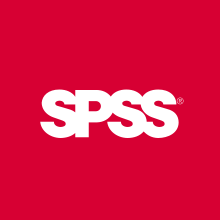Introduction to SPSS
The course is aimed to cover some of the most frequent applications of SPSS, such as displaying statistical data graphically, principal component analysis, factor analysis,hypothesis analysis, analysis of variance, linear and multilinear regressions
In the end of this course students will be able to handle statistical data analysis on their own. During the course both pedagogically prepared "artificial" data and data from real surveys are used. No advanced prior knowledge on statistics is required, all the needed concepts will be explained.
SPSS is regarded to be the most widely used statistical software in social sciences,and it has become a common tool also in other sciences (economics, biology etc.).
| You can rate this course here: |
Day 1
Basics of SPSS. Descriptive statistics, charts and graphs, hypothesis analysis, testing dependence/independence.
- Different levels of measure: scale, ordinal, nominal.
- Basic descriptive statistics. Measures of central tendency: mean, median, mode. Measures of dispersion: range, standard deviation, variance.
- Graphs and charts: bar chart, pie chart, histogram, scatter plot.Which of them should be used in different situations?
- Hypothesis analysis with SPSS. Testing dependence/independence, Pearsons chi-square. Levels of significance.
Day 2
SPSS in practice, some useful tips. The "tricks" of dependence/independence testing
- Converting different types of files into ".sav" files. How can one enter raw data into SPSS efficiently, how to label the data.
- Transforming the data.
- Multiple independence analysis - a useful way to circumvent "significance level problems".
- Elementary principal component analysis.
Day 3
Principal Component Analysis with SPSS.
- Definition and meaning of the principal component.
- Communalities, extraction, variance.
- Usability of the method (the cases of scale and ordinal measures).
- Information content and the distribution of the principal component.
- Omission of variables with insufficient communalities.
Day 4
Factor Analysis with SPSS using a "real example".
- The factor matrix and its interpretation.
- The Maximum Likelihood method. Reparing the model.
- Factor rotation and the varimax method.
- Omission of variables belonging to more than one factor, the appearence of latent variables.
- Establishing factor scores. Statistics of factor scores.
- When the factors explain more than 100%. A common pitfall.
Day 5
Explanatory models. Analysis of Variance, Regression Analysis.
- Using SPSS for Analysis of Variance (ANOVA)
- Twofold ANOVA, interaction.
- Linear regression analysis. When should we accept a regression line?
- Two variable regressions.
Day 6
Charts and tables
- Simple charts: bar, pie, histogram
- Compund charts, chart builder
- Chart editing, 3D effects, color and fill
- Addig special effect to charts, jittering, pletora of graphs
- Saving and manipulating tables
Further more details:
